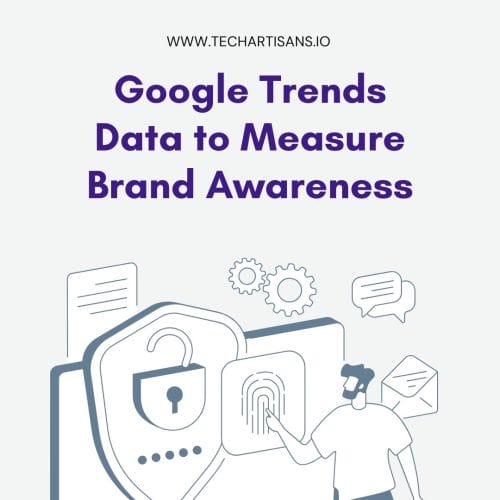Brand awareness is a crucial aspect of any business. It refers to the level of familiarity and brand recognition that people have with a particular brand. High brand awareness is essential for the success of a business as it can influence consumers’ buying decisions and help you get new customers.
To understand the significance of this in the context of digital marketing, consider exploring Agile vs. Scrum methodologies in marketing.
Measuring brand awareness is, therefore, critical for companies to determine the effectiveness of their marketing strategy and identify areas where improvements can be made. You can measure brand awareness in several ways. In this article, we have highlighted 15 effective ways to measure your brand awareness.
By using these methods, businesses can gain valuable insights into how much people know about their brand, which can help them make informed decisions about their marketing and branding efforts.
1. Surveys/Questionnaire

Running brand awareness surveys is a good way to measure brand awareness, providing direct insights into what people think about a particular brand. When designing customer surveys, the questions should be prepared to gather information on how much people know about the brand, its products or services, and its values.
For more insights on enhancing customer experience, check out ways to improve customer experience
Then you can analyze the survey results to determine the level of brand awareness.
If a large percentage of respondents are aware of the brand and can name its products or services, it indicates that the brand has a strong presence in the market.
2. Search Volume in Google Analytics

Google Analytics is a popular tool businesses use to track website traffic and analyze user behavior. It provides valuable insights into a brand’s online presence and brand awareness.
It helps businesses determine how many people visit their website and how long they stay on it. This information can be used to measure brand awareness, as a higher number of website visitors indicates higher brand recognition. Moreover, it provides data on website traffic sources, such as social media, search engines, or referral websites, which can help businesses identify areas where they need to improve their marketing efforts.
Google Analytics is a popular tool businesses use to track website traffic and analyze user behavior, an essential aspect of eCommerce SEO. For more on this topic, see the best eCommerce SEO platforms
By analyzing this data,businesses can better understand their audience and adjust their strategies to improve brand awareness campaigns.
3. Referral Traffic Statistics

Examining referral traffic statistics can help gauge brand awareness as it provides insights into how many people visit a brand’s website through referral links from other websites.
By analyzing referral traffic statistics, businesses can determine which websites drive the most traffic to their website, which indicates which websites promote the brand better and increase its visibility. For example, high referral traffic from reputable and relevant websites can suggest that the brand is well-known and respected within its industry.
Analyzing referral traffic statistics is crucial for understanding which websites increase a brand’s visibility. A deeper understanding can be gained by looking at effective ways to measure your brand awareness.
Referral traffic statistics can also help businesses identify new marketing opportunities and partnerships with websites promoting their brand.
Examining referral traffic statistics is an essential strategy for measuring brand awareness and identifying new marketing opportunities to increase brand visibility and engagement.
4. Success of Backlinks

Tracking the success of backlinks is an effective way to measure brand awareness, as it provides insights into how many other websites are linking back to a brand’s website.
Backlinks from reputable and relevant websites can increase a brand’s visibility and reputation, leading to increased brand awareness and traffic to the brand’s website. Tracking backlinks can also help businesses identify potential link-building opportunities and partnerships with other websites that can increase their visibility and reach.
Overall,tracking the success of backlinks is an essential strategy for measuring brand awareness and identifying new opportunities to increase a brand’s visibility and engagement.
5. Share of Impressions and Share of Voice

Measuring your share of impressions and share of voice provides insights into how often your brand is mentioned and discussed compared to your competitors in the market. The share of impressions measures the number of times potential customers see your brand, while the share of voice measures the percentage of social media mentions in conversations about your industry.
Measuring your share of impressions and voice is key to understanding market position. This concept is further expanded in our article on the benefits of having a website for brand visibility.
By measuring your share of impressions and share of brand voice, businesses can determine how well their marketing efforts are performing and how well they are resonating with their target audience. Measuring the share of impressions and share of voice is an essential strategy for measuring brand awareness and improving a brand’s visibility and reach in the market.
6. Social Media Activities

Social media analytics is a valuable tool to measure brand awareness and engagement on social platforms such as Facebook, Twitter, Instagram, and LinkedIn. Social media analytics provides data on various metrics, such as the number of followers, likes, shares, comments, and mentions, which can help businesses determine how well their brand performs on social media.
By analyzing social media analytics, businesses can identify their most popular content, followers, and when their audience is most active. This information can help businesses improve their social media marketing strategies and increase brand awareness by reaching a larger audience.
In addition, social media analytics can help businesses track and compare their social media performance with their competitors. By keeping an eye on their competitors, businesses can adjust their strategies and stay ahead of the competition.Overall, social media analytics is an essential tool to measure brand awareness on social media and raise brand awareness.
To deepen your understanding of this topic, especially on platforms like LinkedIn, you might find how to create a LinkedIn business page helpful.
7. Check Upon the Mentions

Brand mentions refer to instances where a brand is mentioned or discussed online. These mentions can occur in various places,including social media, forums, blogs, news articles, and reviews. Monitoring brand mentions is an effective way to measure brand awareness and reputation.
In addition, this information can help businesses identify areas to improve their brand awareness efforts and address negative comments or complaints.
Monitoring brand mentions is a useful strategy for measuring brand awareness and reputation, which can help businesses make informed decisions to improve their branding and marketing efforts.
8. Use Brand Awareness Measuring Tools

Using robust brand awareness tools provides businesses with sophisticated metrics and insights into their brand’s performance in the market. These tools use advanced algorithms and analytics to track brand awareness metrics, including website traffic, social media engagement, search engine ranking, and more.
By using these tools, businesses can obtain a comprehensive overview of their brand’s online presence and how well their marketing efforts are performing.Moreover,these tools can help businesses identify areas where they need to improve their marketing and branding strategies to increase their visibility and engagement with their target audience.
Tools like SEMrush and Ahrefs are vital for this purpose. Additionally, understanding SEO and responsive web design benefits can further enhance brand awareness efforts.
9. Check How Well Your Content is Performing

Checking how well your content performs provides insights into how engaging and valuable your content is to your target audience.
High-performing content, such as blog posts, videos, social media posts, and other types of content, can increase a brand’s visibility and reputation, increasing brand awareness and engagement.By checking how well your content is performing, businesses can determine which types of content resonate with their target audience and which do not.
Moreover, checking content performance can help businesses identify areas where they need to improve their content marketing strategies, such as by creating engaging and relevant content that resonates with their target audience.
Analyzing content performance is key to effective marketing. For more insights, explore our guide on repurposing content.
10. Measure Earned Media Value

Measuring earned media value is an effective way to measure brand awareness as it provides insights into the importance of earned media coverage for a brand.
Earned media refers to any exposure a brand receives through organic mentions and shares, such as social media posts, positive reviews, and press coverage. By measuring earned media value, businesses can determine the reach and impact of their earned media coverage and how well it resonates with their target audience.
Moreover, measuring earned media value can help businesses identify areas where they need to improve their public relations and media outreach strategies to increase their visibility and reach. You can use tools like Meltwater, Cision, and TrendKite, which offer various features to measure earned media value effectively.
11. Evaluate the Brand’s Social Media Engagement

Evaluating a brand’s social media engagement provides insights into how well it connects with its target audience on social media platforms. Social media engagement includes metrics such as likes, shares, comments, and followers, which indicate how well a brand’s content resonates with its target audience.
Evaluating social media engagement is critical. Further insights can be gained by understanding how to leverage social media PR for your business
It also helps businesses determine the effectiveness of their brand awareness efforts and identify areas where they need to improve their marketing strategies, such as by creating more engaging and relevant content that resonates with their target audience.
High social media engagement levels can increase visibility, reach, and reputation, contributing to increased brand awareness.
12. Google Trends Data to Measure Brand Awareness

Google Trends effectively measures brand awareness by providing insights into the search interest for a particular brand or product over time. You can use several free tools that show the popularity of search terms over time, making it an ideal way to measure brand awareness.
By analyzing the search interest for a particular brand, businesses can determine the level of interest in their brand, how it is perceived in the market, and how it compares to competitors. These tools also provide information on the geographic location of the searches and the related search terms used by users.
Google Trends data can help businesses identify seasonal trends, market shifts, and emerging trends that can impact their brand’s awareness and reputation.
13. Check What Your Employees Say About the Brand

Checking what your employees say about the brand is an effective way to measure brand awareness, as it provides insights into how well a brand is perceived within the company.
Employees are often the first brand advocates and can significantly build brand awareness and reputation. By checking what employees say about the brand, businesses can determine how well the brand’s values, culture, and mission are aligned with their employees’ perceptions.
Employee feedback can also provide insights into areas where the brand needs to improve, such as by developing better communication channels or providing more training and development opportunities.
Employee advocacy programs can effectively building brand awareness and engagement by encouraging employees to share positive experiences with the brand on social media and other channels.
14. Use Brand Tracking Software for Realistic Metrics

Brand tracking software provides realistic metrics that businesses can use to track and monitor their brand’s performance in the market.
They can track a range of metrics, including brand reach, sentiment, engagement, and share of voice, which can help businesses identify areas where they need to grow brand awareness and reputation.
Additionally,brand tracking software can provide insights into how the brand is perceived in the market compared to competitors and how existing customers interact with the brand across different channels.It helps businesses identify key trends and changes in the market, allowing them to adjust their marketing strategies accordingly.
15. Accurately Measure the Overall Revenue or Benchmark Success

The overall revenue or benchmark success is a tangible and measurable metric for determining the success of a brand perception.
By monitoring overall revenue, businesses can determine if their marketing efforts translate into increased sales and revenue growth.
Additionally, businesses can benchmark their success by comparing their revenue growth to industry standards and competitors to determine how well their brand performs in the market.
It is important to note that measuring revenue alone may not provide a complete picture of a brand’s success, as other factors, such as customer loyalty, brand reputation, and market share, can also impact a brand’s performance. However, revenue growth can provide a valuable metric for businesses to use when assessing their brand awareness and marketing strategies
Conclusion
In today’s competitive market,building a brand’s perception is critical for the success of any business. Therefore, measuring brand experience is an essential strategy for businesses to evaluate the effectiveness of their marketing efforts and determine their brand’s performance in the market. By using methods to measure brand awareness businesses can gain insights into their brand’s reputation, customer perception, and overall success.
Ultimately, measuring brand awareness is an ongoing process that requires constant monitoring and adjustment to ensure that a brand remains relevant and competitive.
For more in-depth information on growing your brand through digital marketing, see ways to grow your brand through digital marketing







